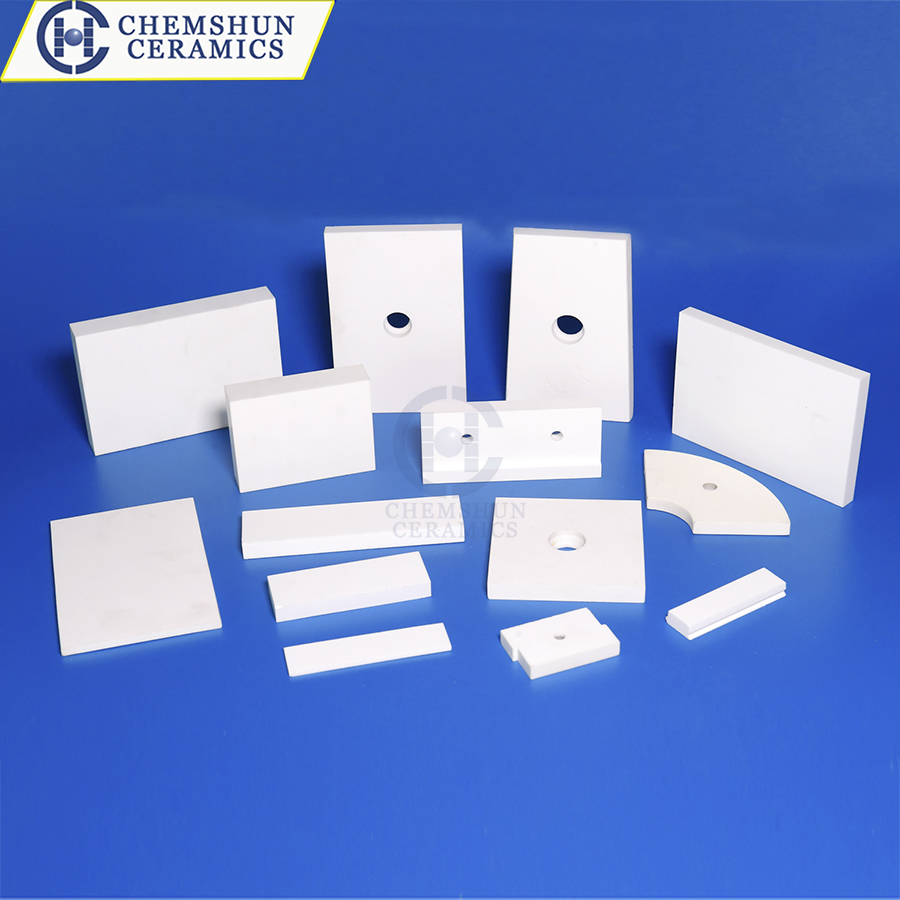Top articles
- High-purity 99.7% alumina ceramics helpful to semiconductor manufacturing technology
- Alumina Ceramic Grinding Balls: High-Efficiency Solutions for Industrial Grinding
- How to Select Suitable Wear-Resistant Ceramic Lining Tiles in the Mining Industry
- Advantages of Ceramic Rubber Composite Liners in Industrial Applications
- How to Install Alumina Ceramic Liners for Long-Lasting Adhesion?
- 99% alumina bulletproof ceramics are the preferred materials for protective devices
- Alumina Ceramic Substrates:Characteristics,Advantages,Disadvantages,and Applications
- Why do alumina industrial ceramics wear out?
- The reason of abrasion resistant ceramic tiles falling off when pasted on equipment
- Seven aspects of advantages & applications of alumina ceramic substrates
Latest articles
- High-purity 99.7% alumina ceramics helpful to semiconductor manufacturing technology
- Alumina Ceramic Grinding Balls: High-Efficiency Solutions for Industrial Grinding
- How to Select Suitable Wear-Resistant Ceramic Lining Tiles in the Mining Industry
- Advantages of Ceramic Rubber Composite Liners in Industrial Applications
- How to Install Alumina Ceramic Liners for Long-Lasting Adhesion?
- Welcome to EXPOMIN 2025
- 99% alumina bulletproof ceramics are the preferred materials for protective devices
- Alumina Ceramic Substrates:Characteristics,Advantages,Disadvantages,and Applications
- Why do alumina industrial ceramics wear out?
- Chemshun Ceramics Chinese New Year Holiday Notice
Your browsing history

Installation Process of Alumina Wear-resistant Ceramics
Alumina wear-resistant ceramics are white corundum wear-resistant ceramics made of 92 aluminum oxide powder or 95 aluminum oxide powder and sintering additives, granulated by granulation tower, and then dry pressed into blocks under dry press and supporting mold, and fired by 1700 degrees high temperature kiln. It is mainly used in power plants, cement, mining and other industrial equipment, to protect the equipment from wear, so that the equipment has a longer service life, reduce the loss caused by downtime maintenance.
Alumina wear-resistant ceramics installation process:
1. Check the ambient temperature. During the installation, the temperature of the construction site must be controlled between 5 ° C and 40 ° C, if the temperature is too low, the construction area must be heated to more than 5 ° C until the wear-resistant ceramics are installed. Construction should be avoided in the sun or strong wind weather conditions to prevent the ceramic pieces caused by thermal expansion and contraction of the pipeline from squeezing each other and affecting the bonding strength. In addition, construction is prohibited under strong winds, because the wind will cause dust, which will seriously affect the bonding strength of ceramic glue.
2. Scaffolding should be set up on the part of the anti-wear, to facilitate the construction personnel to polish the inner wall of the equipment and install alumina wear-resistant ceramics.
3. Surface treatment, with cleaning tools to clean the construction site of floating ash, debris, etc.
4. mechanical rust removal, the use of sandblasting machine or Angle sander to remove scale, rust, debris, until the metal luster is exposed. Make the surface smooth and flat. Parts with serious wear need to be carefully polished after repair welding or replacement of equipment.
5. cleaning, rust removal with acetone or anhydrous alcohol to achieve clean surface. Clean construction surface contaminants and oil.
6. Mix the glue. The epoxy resin glue and curing agent in proportion to mix, take 4 parts of glue, 1 part of curing agent, in order to facilitate the construction can take 200 grams of glue 50 grams of curing agent, put on a tray that is easy to mix glue, and then stir, be sure to stir. Then apply the mixed glue to the ceramic plate ( If there are welding holes on the ceramic plate, do not apply glue to the edge of the hole, because if the ceramic plate is compacting, the glue will squeeze into the hole and cause difficulty in welding), The glue should be evenly applied, there should be no leakage, and the thickness should not exceed 1mm, and then the ceramic plate should be attached to the inner wall of the equipment in accordance with the sequence.
Note: Before applying glue, check whether there are burrs and dirt on the surface of the ceramic plate. If so, clean the surface dirt.
7. Attach the coated ceramic plate to the inner wall of the device in sequence, and then tap it gently with a rubber mallet. The ceramic plate mounting shall be tightly attached to the inner wall of the equipment. The ceramic mounting shall be flat and form a smooth surface as far as possible. The height difference of each adjacent ceramic block shall be less than 0.1mm.
8. After pasting, wait for the glue to cure for 24 hours.
9. Check the ceramic plate after pasting. The outer surface of the ceramic lining is smooth and flat, without deep slip marks and cracks. If found unqualified place, should be repaired in time.









